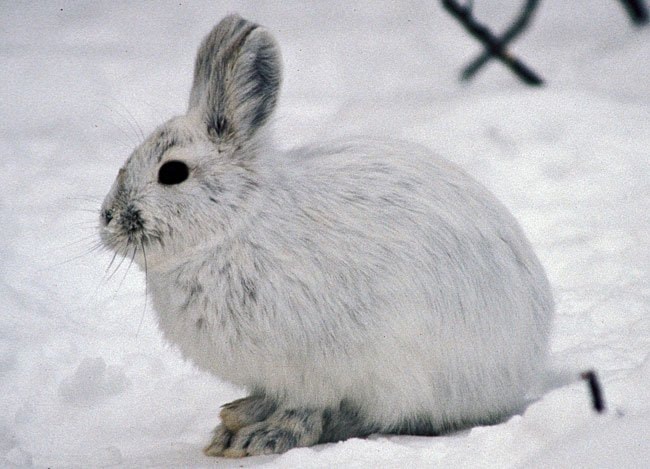by Vivian Belik
It’s early spring in the Yukon and a white hare is crouching on a patch of open dirt in its mismatched fur coat. The snowshoe hare, whose only defence is to run and who has more than a dozen predators, is an easy target.
The hare is one of a handful of animals that relies on its changing coat for protection. But with climate change causing fewer snow days each year, scientists are noticing these animals aren’t able to camouflage fast enough to adapt to the shifting weather (with this year’s late spring an exception).
It’s a phenomenon that researcher Charles Krebs has observed in his 40-year study of Yukon snowshoe hares. Without the right coat colour, hares are defenceless.
“Life as a hare is like gang warfare in the city - the hare is really under pressure. They’re always looking around to see who is going to chase them,” says the University of British Columbia professor emeritus.
It’s widely believed amongst scientists that hares change colour based on length of daylight hours rather than temperature. As you move from one geographic area to another, natural selection dictates when this change will happen. For instance, the coat of a snowshoe hare in Yellowstone Park will turn earlier than that of a hare in the Yukon.
This so-called mismatch phenomenon was discovered by University of Montana researcher Scott Mills. He’s been studying the population dynamic of hares and lynx since the late 90s. A few years ago, while tromping around in the bush with his students, he began to notice white hares hopping along white backgrounds. Around the same time, Mills was reading climate change literature that suggested the biggest overall signal in climate change was the reduction in the number of days of snow on the ground in temperate areas.
It was like a lightning bolt, says Mills. He immediately began applying for research grants to study whether there was a link between climate change and these so-called mismatched hares.
“People have studied coat colour change - what date it happens and how fast - but nobody has connected it to climate change. It’s a totally novel area,” says Mills.
Each week he and his colleagues set out to the woods to study hares. He’s radio-collared hundreds of hares, tracking them to record their coat colour and how much snow is on the ground. He also pays close attention to whether mismatched hares hide as a result of their coat colour when approached.
This raises an intriguing question: do mismatched hares know they’re the wrong colour? “It sounds absurd. Does a hare look down and say, ‘I’m white and the ground is brown?’” asks Mills. He hasn’t yet analyzed his data in respect to this, but anecdotally he’s heard from hunters that mismatched hares are more likely to run away when approached. It’s significant when you consider that camouflaged hares are one of the few wild animals that don’t flee when humans approach.
Mills is also hoping to identify the sets of genes that underlie coat-colour changes. His team has started to look at a groupings in the Cascade Mountains that have both brown and white hares in the same population. “We often think of evolution happening to fossils over tens of thousands of years,” says Mills. “But (the Cascade hares) show us there’s quite a bit of room for evolutionary change.”
Research has shown that environmental stressors and changes can affect the behaviour of animals so that they’re more adaptive to their surroundings. Mills thinks that they may also be able to adapt how they look. “There’s reason to be optimistic that hares can rapidly change coat colour,” he says.
Krebs is a bit more cautious in his thinking. “I don’t think anybody knows. I say it’s probably unlikely, though. The flu virus can change in a matter of weeks, but animals take a long time. If they were to adapt because of climate change it might be more likely through their behaviour, such as sitting under a tree when they’re brown and on snow when they’re white,” he says.
Krebs is planning to conduct a several-year study of snowshoe hares in the Yukon to test Mills’ theory of mismatch. Funding from Environment Canada was lined up a few years ago, but there was a hitch: snowshoe hare numbers had hit rock-bottom. Population numbers are starting to rise again and Krebs is hoping to get out in the field this year to start studying them. “We’re gearing up for this research, but hares are also gearing up too,” says Krebs.
This column is co-ordinated by the Yukon Research Centre at Yukon College with major financial support from Environment Yukon and Yukon College. The articles are archived at http://www.yukoncollege.yk.ca/research/publications/newsletters_articles.
